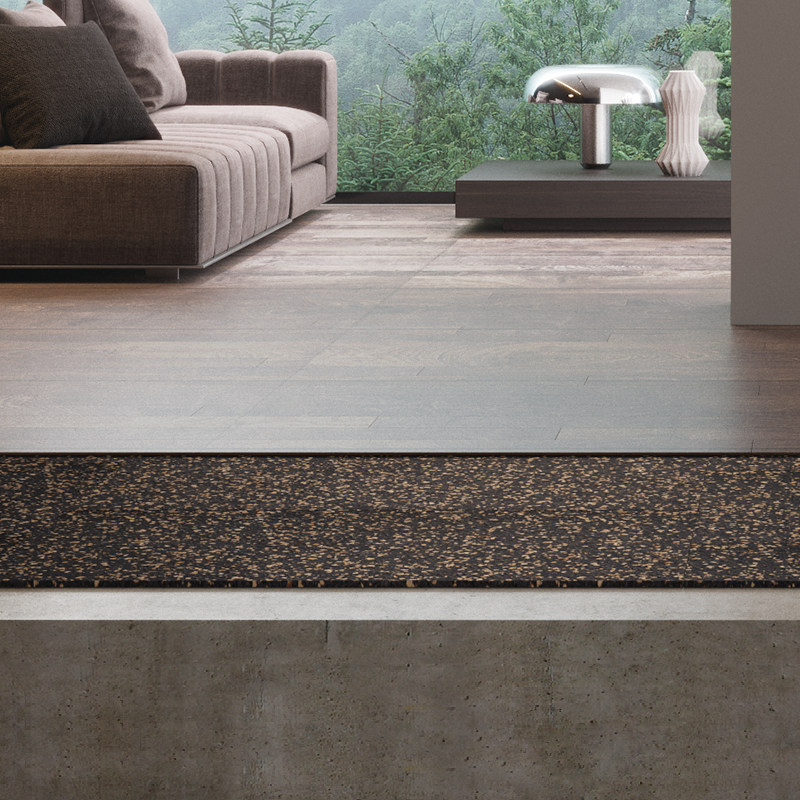WHY CORK?
Cork is a 100% natural material that has a honeycomb-like structure of microscopic cells filled with an air-like gas and coated mainly with suberin and lignin. One cubic centimeter of cork contains about 40 million cells. It has a closed-cell structure, making it lightweight, airtight and watertight.
Cork is an amazingly versatile material and, when combined with many other composites, it delivers great benefits in all flooring installations.
Please see the table below to explore the benefits of adding cork to other materials.
The improvements in acoustic and thermal insulation are enormous, but that's not all! Mixing cork with other composites also increases floor longevity because of increased compressibility of the material and its ability to recover. As a result, the floor has extra underlying protection when subjected to loads.



